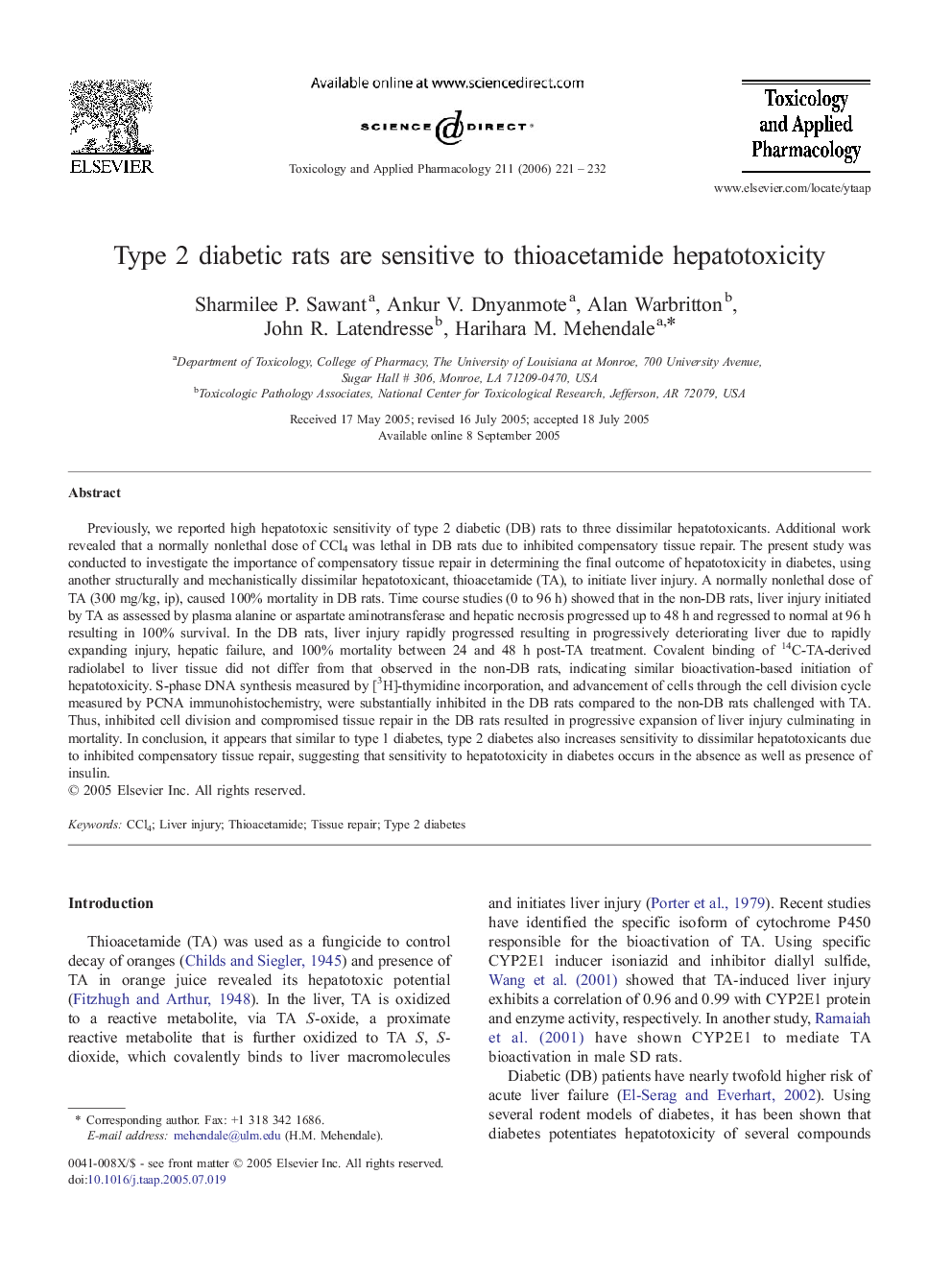| کد مقاله | کد نشریه | سال انتشار | مقاله انگلیسی | نسخه تمام متن |
|---|---|---|---|---|
| 2571880 | 1128656 | 2006 | 12 صفحه PDF | دانلود رایگان |

Previously, we reported high hepatotoxic sensitivity of type 2 diabetic (DB) rats to three dissimilar hepatotoxicants. Additional work revealed that a normally nonlethal dose of CCl4 was lethal in DB rats due to inhibited compensatory tissue repair. The present study was conducted to investigate the importance of compensatory tissue repair in determining the final outcome of hepatotoxicity in diabetes, using another structurally and mechanistically dissimilar hepatotoxicant, thioacetamide (TA), to initiate liver injury. A normally nonlethal dose of TA (300 mg/kg, ip), caused 100% mortality in DB rats. Time course studies (0 to 96 h) showed that in the non-DB rats, liver injury initiated by TA as assessed by plasma alanine or aspartate aminotransferase and hepatic necrosis progressed up to 48 h and regressed to normal at 96 h resulting in 100% survival. In the DB rats, liver injury rapidly progressed resulting in progressively deteriorating liver due to rapidly expanding injury, hepatic failure, and 100% mortality between 24 and 48 h post-TA treatment. Covalent binding of 14C-TA-derived radiolabel to liver tissue did not differ from that observed in the non-DB rats, indicating similar bioactivation-based initiation of hepatotoxicity. S-phase DNA synthesis measured by [3H]-thymidine incorporation, and advancement of cells through the cell division cycle measured by PCNA immunohistochemistry, were substantially inhibited in the DB rats compared to the non-DB rats challenged with TA. Thus, inhibited cell division and compromised tissue repair in the DB rats resulted in progressive expansion of liver injury culminating in mortality. In conclusion, it appears that similar to type 1 diabetes, type 2 diabetes also increases sensitivity to dissimilar hepatotoxicants due to inhibited compensatory tissue repair, suggesting that sensitivity to hepatotoxicity in diabetes occurs in the absence as well as presence of insulin.
Journal: Toxicology and Applied Pharmacology - Volume 211, Issue 3, 15 March 2006, Pages 221–232